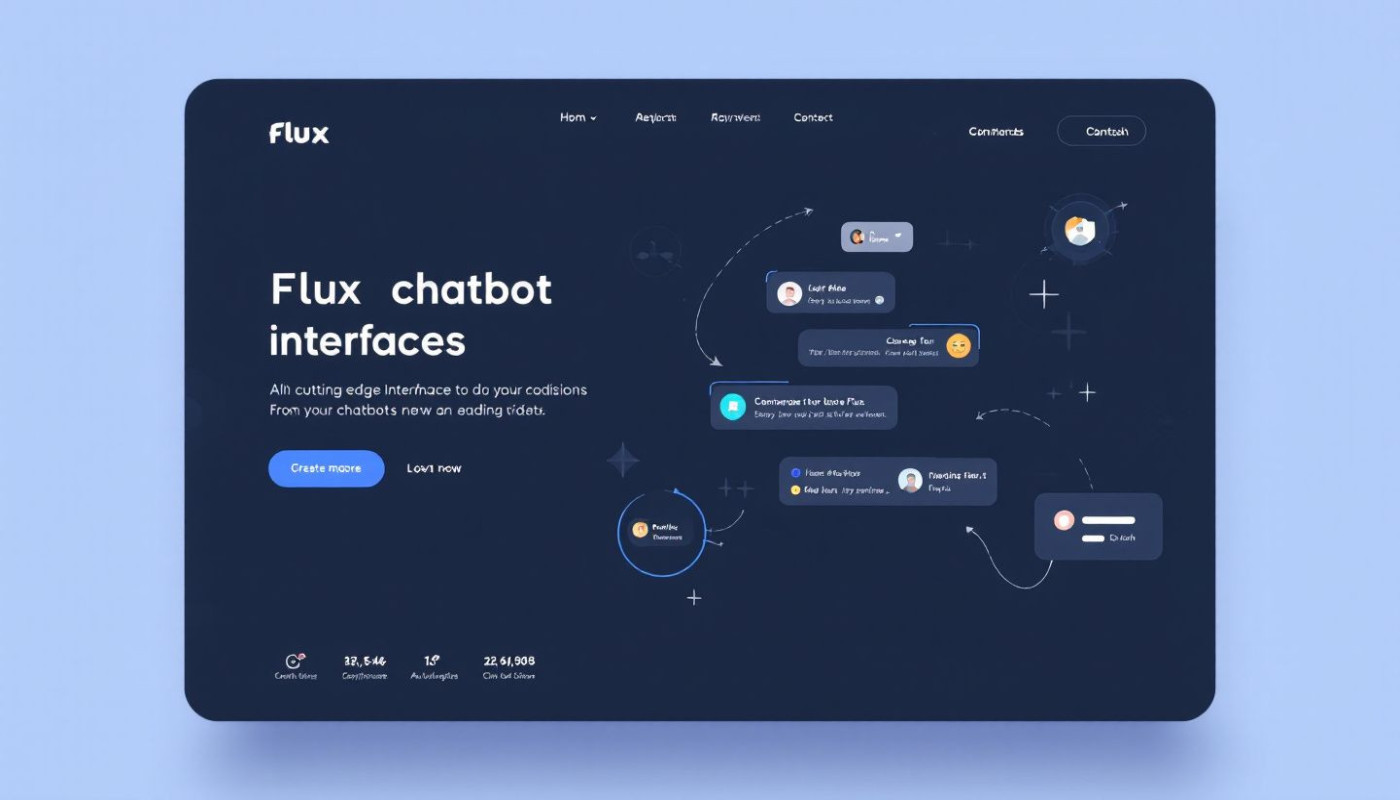Table of contents
Imagine transforming every customer interaction into a seamless, efficient, and personalized experience. The right chatbot builder can revolutionize your brand’s customer service, automating responses while adding a human touch through advanced artificial intelligence. Explore how making an informed choice in chatbot technology propels brands ahead of the competition, and learn which key features maximize both customer satisfaction and operational efficiency.
Understanding chatbot builders’ role in customer service
Serving as the unseen engine behind modern customer interactions, chatbot builders orchestrate seamless experiences by connecting a business’s support channels, data sources, and digital platforms. Through integration with APIs, CRM databases, and omnichannel messaging tools, these platforms enable real-time conversations across websites, social media, and apps. This coordinated approach ensures that customers receive consistent information, while their inquiries are intelligently routed for more accurate and efficient responses. Companies leverage this connective infrastructure to unify data streams, automate repetitive tasks, and provide a cohesive presence, regardless of where the customer initiates contact.
The sophistication underlying chatbot builders lies in their application of natural language processing, conversational AI, and adaptive machine learning, all collaborating to interpret intent, personalize replies, and learn from ongoing interactions. These technologies empower bots to respond promptly, resolve common issues without human intervention, and escalate only nuanced matters to support agents, who can then devote attention to situations demanding empathy or specialized skills. As a standout example, Botnation AI extends a user-friendly, code-free, artificial intelligence-driven tool that enables even non-technical teams to craft advanced support bots at no cost, making conversational automation accessible and effective for brands seeking to refine their customer engagement strategy.
Personalization through advanced AI-driven interactions
A sophisticated chatbot builder employs artificial intelligence to transform routine exchanges into dynamic, context-aware conversations. By integrating intent recognition, the chatbot can discern not just what users say, but why they are reaching out, enabling immediate and meaningful responses. Sentiment analysis further enriches this process, evaluating the emotional tone behind messages to adapt responses—offering empathy, encouragement, or concise information as the situation demands. When a customer inquires about a delayed order, for instance, the chatbot senses frustration and responds with an apologetic, action-oriented message, addressing concerns with sensitivity and care.
Personalization reaches new heights when chatbots draw upon user profiles and purchasing history. For example, a returning customer seeking advice on a product can receive suggestions based on previous interactions and preferences, rather than generic recommendations. Behavioral analytics help the chatbot anticipate needs, such as offering restock reminders or complementary product suggestions at the perfect moment in the customer journey. If a user frequently browses fitness gear, the chatbot might proactively share new arrivals or exclusive discounts, making each interaction feel uniquely tailored and attentive.
These advanced AI-driven features do more than streamline support—they foster brand affinity and repeat engagement. Tailored messaging signals to customers that their time and preferences are valued, transforming impersonal transactions into memorable experiences. By providing relevant recommendations and proactive assistance, a chatbot builder equipped with these technologies enables your business to stand out in a crowded market, cultivating loyalty and turning casual visitors into enthusiastic brand advocates. This approach keeps customers both satisfied and eager to return, bolstering lasting relationships and positive word-of-mouth.
Seamless integration enhances brand consistency
Modern chatbot builders offer far more than basic conversational automation; their real impact lies in the ability to weave a consistent brand narrative through every digital interaction. When a customer engages with a brand, whether via a website chat widget, a social platform like Facebook Messenger, or even SMS, expectations remain constant: the tone, terminology, and level of service should all feel unmistakably familiar. Leveraging a chatbot builder with robust integration features helps ensure that your brand’s personality and values are never lost in translation, regardless of the channel.
Multi-language support stands out as a game-changer, particularly for brands with a diverse or global audience. A chatbot that seamlessly handles inquiries in multiple languages—while maintaining the intended brand voice—demonstrates genuine commitment to customer inclusivity. For example, a luxury goods retailer can ensure that a customer in Paris receives the same polished, attentive responses as one in Tokyo, all while preserving the nuances of tone and terminology that define the brand’s prestigious image. This consistency fosters trust and reinforces customer loyalty across borders.
Customizable templates and dialog flows empower businesses to tailor each interaction to their specific standards, further cementing brand identity. Instead of settling for generic out-of-the-box responses, companies can craft personalized greetings, on-brand follow-ups, and unique escalation paths that echo their core values. Consider a tech company that prides itself on innovation: its chatbot can be designed to use cutting-edge terminology, reference proprietary products, and even make witty remarks that reflect the overarching brand ethos. Such customization makes even automated exchanges feel intentional and authentic.
Omnichannel integration is another critical capability for maintaining a cohesive customer experience. By deploying a single chatbot solution across various platforms—be it web, social media, or messaging apps—brands can ensure that customer data, preferences, and previous interactions carry over smoothly from one touchpoint to the next. Imagine a customer who starts an inquiry on Instagram and finishes it on the company’s website; with integrated chatbot technology, every message remains contextually relevant and stylistically consistent, eliminating friction and reinforcing the sense of a unified brand presence.
Optimizing workflows with automation and analytics
Modern chatbot builders are transforming customer service by streamlining repetitive workflows and enhancing operational efficiency. Through automation, tasks such as answering frequently asked questions, processing standard queries, and even gathering preliminary details from customers are handled swiftly, freeing up human agents to focus on complex issues. Automated ticket routing ensures that each request reaches the most suitable department or specialist, reducing response times and minimizing errors. These bots can also retrieve and deliver information instantly, pulling details from product catalogs, order histories, or policy documents, thus accelerating resolution and improving customer satisfaction.
Integrating chatbot builders with backend systems such as enterprise resource planning (ERP) software, helpdesk platforms, and company knowledge bases brings another dimension of efficiency. When a bot connects directly to these platforms, it can access up-to-date inventory data, process returns, or provide tailored solutions based on the customer’s history. For example, a chatbot linked to a knowledge base can offer personalized troubleshooting steps, while integration with an ERP might allow instant order tracking. Such seamless connectivity eliminates data silos and enables agents to access all required information without toggling between multiple systems.
Analytics and reporting tools within chatbot builders provide a wealth of actionable information that can drive continuous improvement in customer service. Real-time dashboards might display metrics like average response time, chat abandonment rates, and resolution rates, allowing managers to spot trends and identify areas for refinement. For instance, if analytics reveal that a specific query type is causing delays, updates to the bot’s knowledge base or escalation protocols can be prioritized. These insights are not just retrospective; they enable proactive adjustments, ensuring that the customer service workflow evolves in response to emerging needs and behaviors.
Having robust analytics at your fingertips empowers organizations to make informed, data-driven decisions. This can include identifying frequently asked questions for self-service updates, uncovering recurring pain points, or measuring the impact of newly deployed automation features. By monitoring key performance indicators, teams can experiment with workflow changes, track their effects, and iterate rapidly. Over time, this culture of continuous optimization supports both short-term improvements and long-term strategic growth, positioning the brand as responsive and attentive to evolving customer expectations.
Evaluating scalability and security for future-proof solutions
Selecting a chatbot builder that can seamlessly scale as your business grows is vital for delivering a consistent and responsive customer experience. Cloud-based solutions offer on-demand scalability, ensuring that a surge in user interactions—whether seasonal or unexpected—does not impact performance or uptime. For brands anticipating expansion, a platform with auto-scaling infrastructure can handle increasing volumes without requiring manual intervention, reducing operational burdens while maintaining swift response times for each customer query.
Security is a non-negotiable aspect of any digital customer service tool, especially when handling personal or payment information. Opt for a chatbot builder that implements end-to-end encryption to keep conversations private from start to finish. Adhering to data privacy regulations, such as GDPR, demonstrates a commitment to protecting customer data and avoids legal risks. Features like role-based access control enable the assignment of user permissions based on job roles, minimizing the risk of unauthorized access to sensitive information and allowing for granular oversight of who can view or modify critical backend settings.
Future-proofing your customer service infrastructure means prioritizing both adaptability and security from the outset. A well-chosen chatbot builder should offer robust APIs and integrations, making it easy to connect with evolving business tools and processes over time. This adaptability, combined with rigorous security measures, creates a dependable environment where innovation can flourish without compromising customer trust. By thoughtfully evaluating scalability and security capabilities, you lay the groundwork for a resilient customer service framework that empowers your brand to grow confidently and securely into the future.
On the same subject

Streamlining Your Business Processes Through Efficient Kubernetes Upgrade Deployment

Enhancing Cluster Security With Advanced Kubernetes Audit Techniques

Ensuring Seamless Service During A Kubernetes Cluster Upgrade

Exploring Best Practices For A Seamless Kubernetes Cluster Upgrade

How Personalized AI Companions Transform Digital Interaction?

Exploring The Future Of Customer Service With Advanced Chatbot Builders

Benefits Of Dedicated Server Protection Against DDoS Attacks

Exploring The Role Of Non-Coding Platforms In Democratizing AI Chatbot Creation

Exploring Advanced Techniques In AI Art Creation

Exploring The Benefits Of Open-source Patching For Operating Systems

Exploring Multilingual Tech Support In Today's Digital World

Exploring The Benefits Of Integrating Free AI Chatbot Services Into Your Business

Tips On What To Do When A Major AI-powered Platform Is Inaccessible

Green Tech: The Answer to Climate Change?

